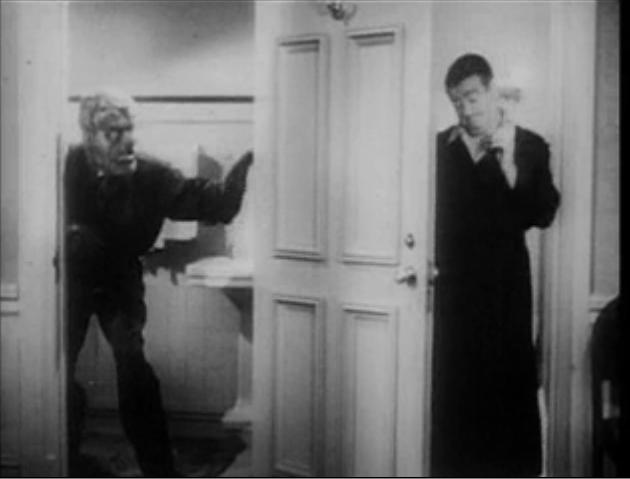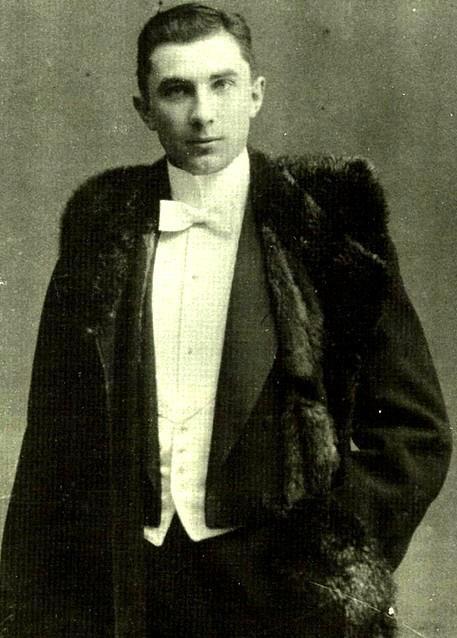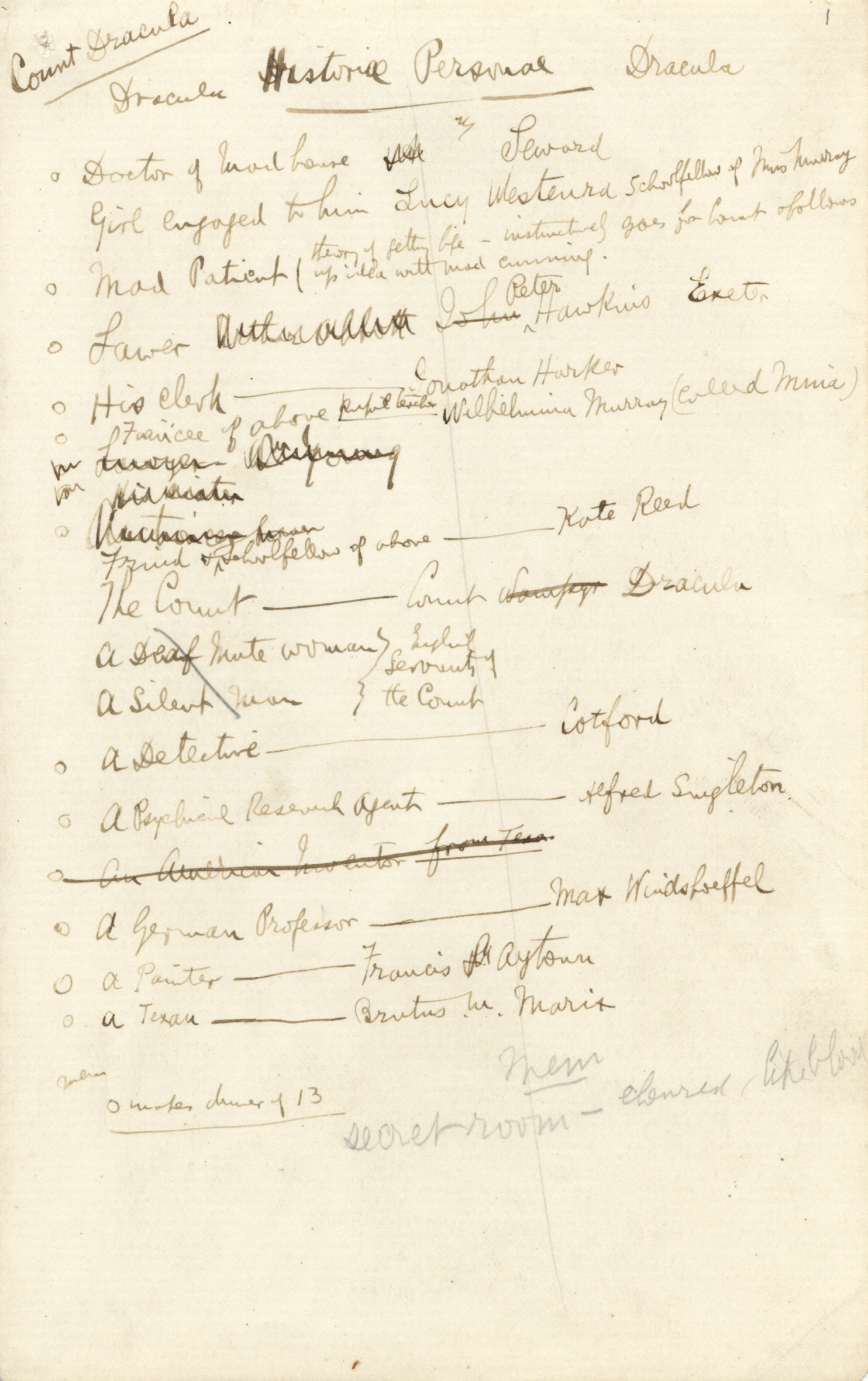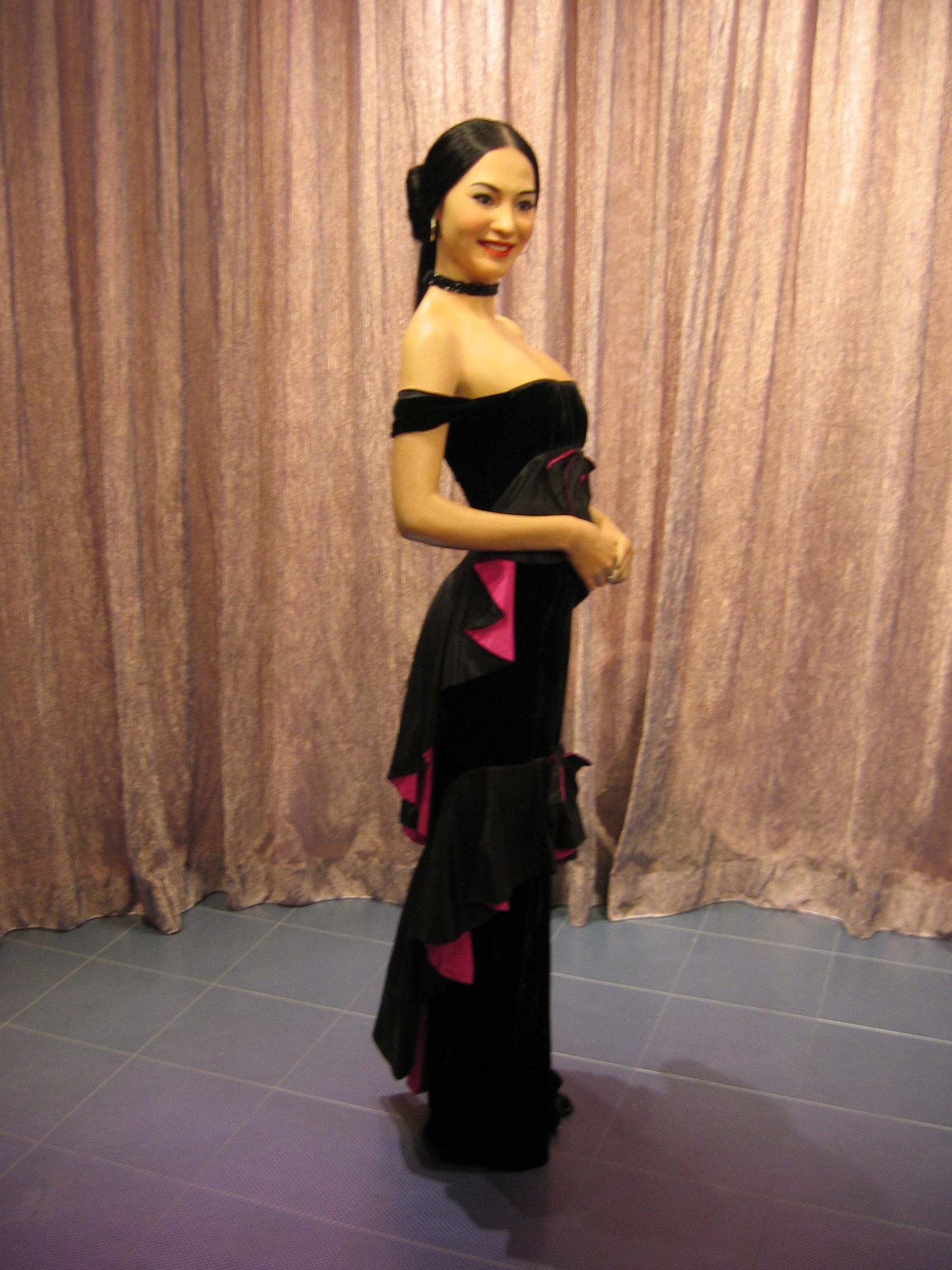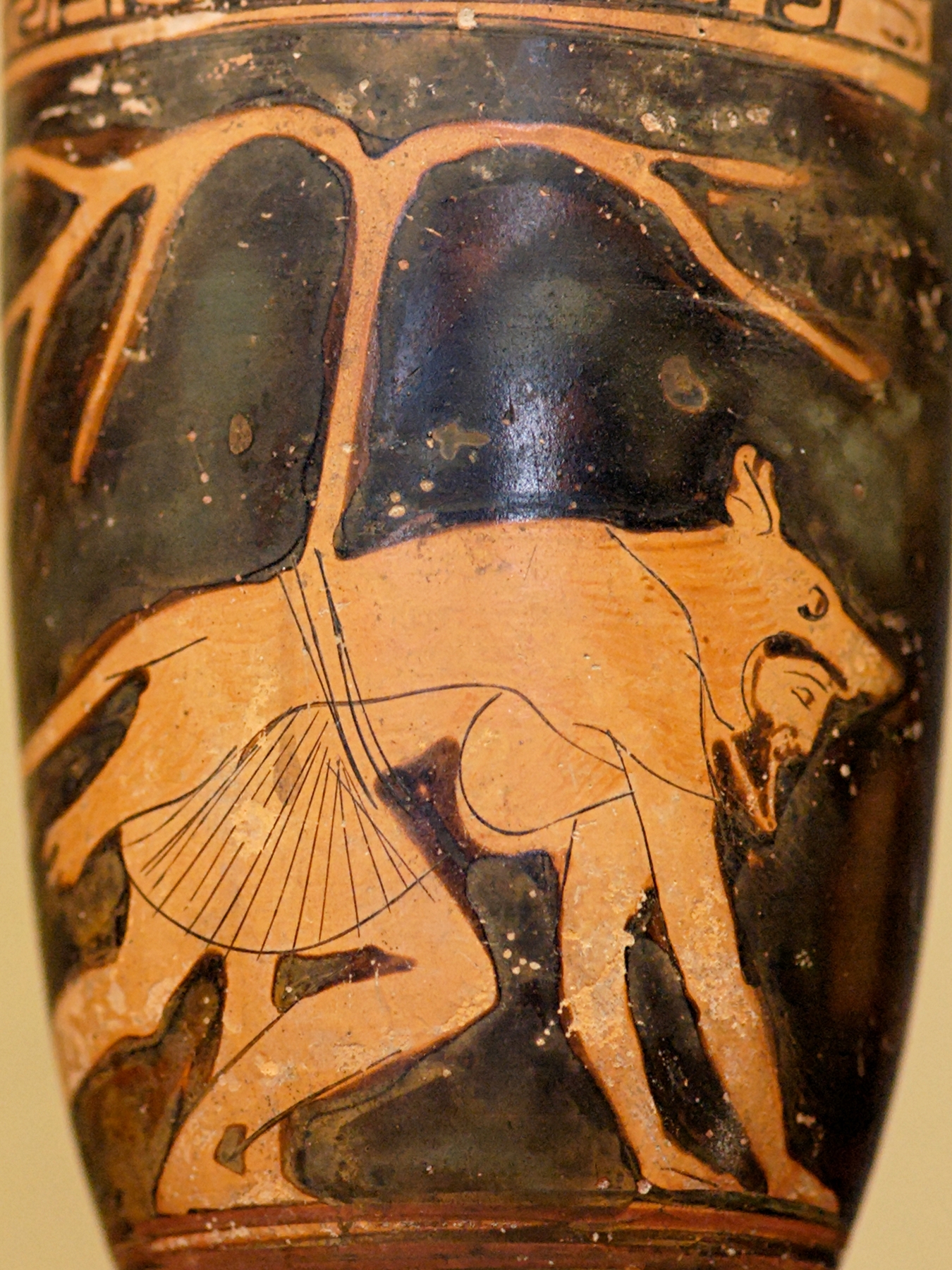|
Abbott And Costello Meet Frankenstein
''Abbott and Costello Meet Frankenstein'' is a 1948 American horror comedy film directed by Charles Barton (director), Charles Barton. The film features Count Dracula (Bela Lugosi), who has partnered with Dr. Sandra Mornay (Lenore Aubert) in order to find a brain to reactivate Frankenstein's monster (Glenn Strange), and they find Wilbur Grey (Lou Costello), the ideal candidate. The film was developed and production started with misgivings by Bud Abbott and Lou Costello, who disliked the script. Barton faced difficulty during the production of the film, with Abbott and Costello often absent from the set. However, the film was successful at the box office and became one of Universal's top films of the year. Several follow-up films ensued involving Abbott and Costello meeting other horror film actors and monsters. The film was mostly well received by critics on its release and in 2001, the United States Library of Congress deemed the film "culturally, historically, or aesthetically ... [...More Info...] [...Related Items...] OR: [Wikipedia] [Google] [Baidu] |
Charles Barton (director)
Charles Barton (May 25, 1902December 5, 1981) was an American film and vaudeville actor and film director. He won an Academy Awards, Oscar for Academy Award for Best Assistant Director, best assistant director in 1933. His first film as a director was the Zane Grey feature ''Wagon Wheels (film), Wagon Wheels'', starring Randolph Scott, in 1934. Barton worked in Hollywood B-movie units. From 1946, he was a principal director of the Abbott and Costello comedies, such as ''The Time of Their Lives'', ''Buck Privates Come Home,'' ''Abbott and Costello Meet Frankenstein,'' and ''Africa Screams''. He later directed Walt Disney films such as ''The Shaggy Dog (1959 film), The Shaggy Dog'' and ''Toby Tyler''. His extensive work for television included every episode of ''Amos 'n' Andy#Television, Amos 'n' Andy'' in the 1950s, a total of 90 episodes of ''Dennis the Menace (1959 TV series), Dennis the Menace'' in the 1960s, and 106 episodes of ''Family Affair'' from 1967 to 1971. One obituary ... [...More Info...] [...Related Items...] OR: [Wikipedia] [Google] [Baidu] |
Frankenstein's Monster
Frankenstein's monster, commonly referred to as Frankenstein, is a fictional character that first appeared in Mary Shelley's 1818 novel '' Frankenstein; or, The Modern Prometheus'' as its main antagonist. Shelley's title compares the monster's creator, Victor Frankenstein, to the mythological character Prometheus, who fashioned humans out of clay and gave them fire. In Shelley's Gothic story, Victor Frankenstein builds the creature in his laboratory through an ambiguous method based on a scientific principle he discovered. Shelley describes the monster as tall and emotional. The monster attempts to fit into human society but is shunned, which leads him to seek revenge against Frankenstein. According to the scholar Joseph Carroll, the monster occupies "a border territory between the characteristics that typically define protagonists and antagonists". Frankenstein's monster became iconic in popular culture, and has been featured in various forms of media, including films, te ... [...More Info...] [...Related Items...] OR: [Wikipedia] [Google] [Baidu] |
Béla Lugosi
Blaskó Béla Ferenc Dezső (; October 20, 1882 – August 16, 1956), better known by the stage name Bela Lugosi ( ; ), was a Hungarian–American actor. He was best remembered for portraying Count Dracula in the horror film classic ''Dracula'' (1931), Ygor in '' Son of Frankenstein'' (1939) and his roles in many other horror films from 1931 through 1956. Lugosi began acting on the Hungarian stage in 1902, appearing in more than a hundred productions. Beginning in 1917, he performed in Hungarian silent films. After the failed Hungarian Communist Revolution of 1919, Lugosi was forced to emigrate to Germany due to his socialist activities. He acted in several films in Weimar Germany, before arriving in New Orleans as a seaman on a merchant ship, then making his way north to New York City and Ellis Island. In 1927, he starred as Count Dracula in a Broadway adaptation of Bram Stoker's novel, moving with the play to the West Coast in 1928 and settling down in Hollywood.Bela ... [...More Info...] [...Related Items...] OR: [Wikipedia] [Google] [Baidu] |
Thwart
A thwart is a part of an undecked boat that provides seats for the crew and structural rigidity for the hull. A thwart goes from one side of the hull to the other. There may be just one thwart in a small boat, or many in a larger boat, especially if several oarsmen need to be accommodated. General description A thwart is a part of a boat that usually has two functions: as a seat, and as a structural member that provides some rigidity to the hull. A thwart goes from one side of the hull to the other in an open (undecked) boat, and therefore resists forces pushing in or pulling out the sides of the hull. More obviously it provides a seat for an occupant of a boat. In many sailing boats, a thwart may help support the mast. This can be done either by inserting the mast through a hole in the thwart (with the end resting in a mast step on the keel), or the mast may be clamped to one side of a thwartthis makes it easier to step and unstep the mast whilst afloat. Under oars In a boat p ... [...More Info...] [...Related Items...] OR: [Wikipedia] [Google] [Baidu] |
Griffin (The Invisible Man)
Griffin, also known as the Invisible Man, is a fictional character who serves as both the protagonist and antagonist of H. G. Wells' 1897 science fiction novel ''The Invisible Man''. In the original work, Griffin is a scientist whose research in optics and experiments into changing the human body's refractive index to that of air results in him becoming invisible. After becoming invisible, he wraps his head in bandages and dons a pair of goggles or glasses in order to enable others to see him. Unable to reverse the invisibility process, he descends into insanity and becomes a criminal. The character and variations thereof have been featured in various media, including films, television series and merchandise. The most famous non-literary incarnation of Griffin is portrayed by Claude Rains in the 1933 film ''The Invisible Man'', distributed by Universal Pictures. The film spawned a number of sequels that feature different invisible characters. Griffin and the 1933 film have become ... [...More Info...] [...Related Items...] OR: [Wikipedia] [Google] [Baidu] |
Bat (animal)
Bats are flying mammals of the Order (biology), order Chiroptera (). With their forelimbs adapted as Bat wing development, wings, they are the only mammals capable of true and sustained Bat flight, flight. Bats are more agile in flight than most birds, flying with their very long spread-out digits covered with a thin membrane or patagium. The smallest bat, and arguably the Smallest organisms, smallest extant mammal, is Kitti's hog-nosed bat, which is in length, across the wings and in mass. The largest bats are the flying foxes, with the giant golden-crowned flying fox (''Acerodon jubatus'') reaching a weight of and having a wingspan of . The second largest order of mammals after rodents, bats comprise about 20% of all classified mammal species worldwide, with over 1,400 species. These were traditionally divided into two suborders: the largely fruit-eating megabats, and the Animal echolocation, echolocating microbats. But more recent evidence has supported dividing the or ... [...More Info...] [...Related Items...] OR: [Wikipedia] [Google] [Baidu] |
Masquerade Ball
A masquerade ball (or bal masqué) is a special kind of formal ball which many participants attend in costume wearing masks. (Compare the word "masque"—a formal written and sung court pageant.) Less formal " costume parties" may be a descendant of this tradition. A masquerade ball usually encompasses music and dancing. These nighttime events are used for entertainment and celebrations. History Masquerade balls were a feature of the Carnival season in the 15th century, and involved increasingly elaborate allegorical Royal Entries, pageants, and triumphal processions celebrating marriages and other dynastic events of late medieval court life. The " Bal des Ardents" (''"Burning Men's Ball"'') was held by Charles VI of France, and intended as a ''Bal des sauvages'' (''"Wild Men's Ball"''), a form of costumed ball ('' morisco''). It took place in celebration of the marriage of a lady-in-waiting of Charles VI of France's queen in Paris on January 28, 1393. The King and fi ... [...More Info...] [...Related Items...] OR: [Wikipedia] [Google] [Baidu] |
Frankenstein's Monster
Frankenstein's monster, commonly referred to as Frankenstein, is a fictional character that first appeared in Mary Shelley's 1818 novel '' Frankenstein; or, The Modern Prometheus'' as its main antagonist. Shelley's title compares the monster's creator, Victor Frankenstein, to the mythological character Prometheus, who fashioned humans out of clay and gave them fire. In Shelley's Gothic story, Victor Frankenstein builds the creature in his laboratory through an ambiguous method based on a scientific principle he discovered. Shelley describes the monster as tall and emotional. The monster attempts to fit into human society but is shunned, which leads him to seek revenge against Frankenstein. According to the scholar Joseph Carroll, the monster occupies "a border territory between the characteristics that typically define protagonists and antagonists". Frankenstein's monster became iconic in popular culture, and has been featured in various forms of media, including films, te ... [...More Info...] [...Related Items...] OR: [Wikipedia] [Google] [Baidu] |
Dracula
''Dracula'' is an 1897 Gothic fiction, Gothic horror fiction, horror novel by Irish author Bram Stoker. The narrative is Epistolary novel, related through letters, diary entries, and newspaper articles. It has no single protagonist and opens with solicitor Jonathan Harker taking a business trip to stay at the castle of a Transylvanian nobleman, Count Dracula. Harker flees after learning that Dracula is a vampire, and the Count moves to England and plagues the seaside town of Whitby. A small group, led by Abraham Van Helsing, hunts and kills him. The novel was mostly written in the 1890s, and Stoker produced over a hundred pages of notes, drawing extensively from Folklore of Romania, folklore and History of Romania, history. Scholars have suggested various figures as the inspiration for Dracula, including the Wallachian prince Vlad the Impaler and the Countess Elizabeth Báthory, but recent scholarship suggests otherwise. He probably found the name Dracula in Whitby's public l ... [...More Info...] [...Related Items...] OR: [Wikipedia] [Google] [Baidu] |
Wax Museum
A wax museum or waxworks usually consists of a collection of wax sculptures representing famous people from history and contemporary personalities exhibited in lifelike poses, wearing real clothes. Some wax museums have a special section dubbed the "Chamber of Horrors (Madame Tussauds), Chamber of Horrors", in which the more grisly exhibits are displayed. Some collections are more specialized, as, for example, collections of wax medical models once used for training medical professionals. Many museums or displays in historical houses that are not wax museums as such use wax figures as part of their displays. The origin of wax museums goes back to the early 18th century at least, and wax funeral effigies of royalty and some other figures exhibited by their tombs had essentially been tourist attractions well before that. History before 1800 The making of life-size wax figures wearing real clothes grew out of the funeral practices of European royalty. In the Middle Ages it was th ... [...More Info...] [...Related Items...] OR: [Wikipedia] [Google] [Baidu] |
Werewolf
In folklore, a werewolf (), or occasionally lycanthrope (from Ancient Greek ), is an individual who can shapeshifting, shapeshift into a wolf, or especially in modern film, a Shapeshifting, therianthropic Hybrid beasts in folklore, hybrid wolf–humanlike creature, either purposely or after being placed under a curse or affliction, often a bite or the occasional scratch from another werewolf, with the transformations occurring on the night of a full moon. Early sources for belief in this ability or affliction, called lycanthropy, are Petronius (27–66) and Gervase of Tilbury (1150–1228). The werewolf is a widespread concept in European folklore, existing in many variants, which are related by a common development of a Christianization, Christian interpretation of underlying European folklore developed during the Middle Ages. From the early modern period, werewolf beliefs spread to the New World with colonialism. Belief in werewolves developed in parallel to the belief in Eu ... [...More Info...] [...Related Items...] OR: [Wikipedia] [Google] [Baidu] |
Larry Talbot
Lawrence Stewart Talbot, also known as the Wolf Man, is the title character of the 1941 Universal film '' The Wolf Man'' and its sequels, created by Curt Siodmak. He was portrayed by Lon Chaney Jr. In the 2010 remake of the film, he is portrayed by Benicio del Toro and in the 2025 reboot of the film, he is portrayed by Christopher Abbott. The Wolf Man was part of the Universal Monsters ensemble. Biography ''The Wolf Man'' (1941) Larry Talbot returns to his ancestral home in Llanwelly, Wales, to reconcile with his father, Sir John Talbot. He had left for America eighteen years earlier, when his elder brother (also named John) was made heir to the estate, but he has returned following his brother's death in a hunting accident. While there, Larry becomes romantically interested in a local girl named Gwen Conliffe, who runs an antique shop. As a pretext, he buys a silver-headed walking stick decorated with a wolf. Gwen tells him that it represents a werewolf (which she def ... [...More Info...] [...Related Items...] OR: [Wikipedia] [Google] [Baidu] |
